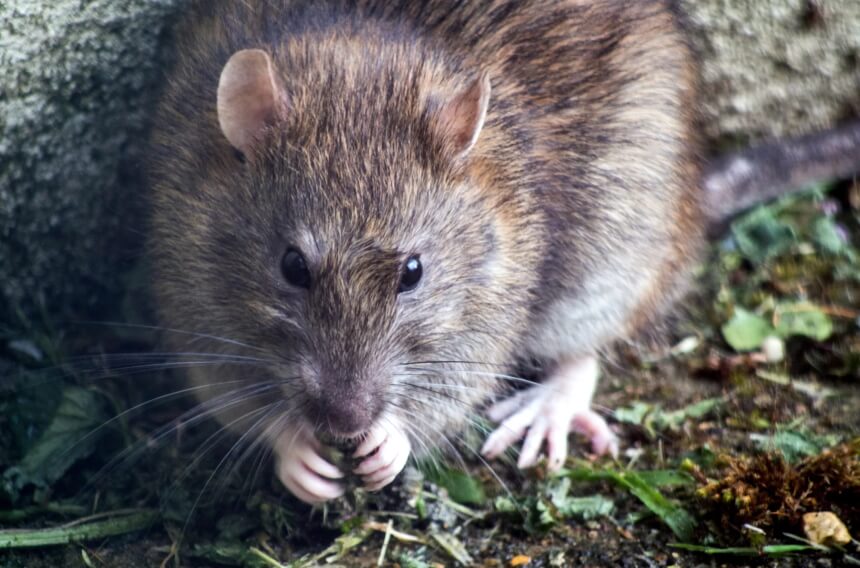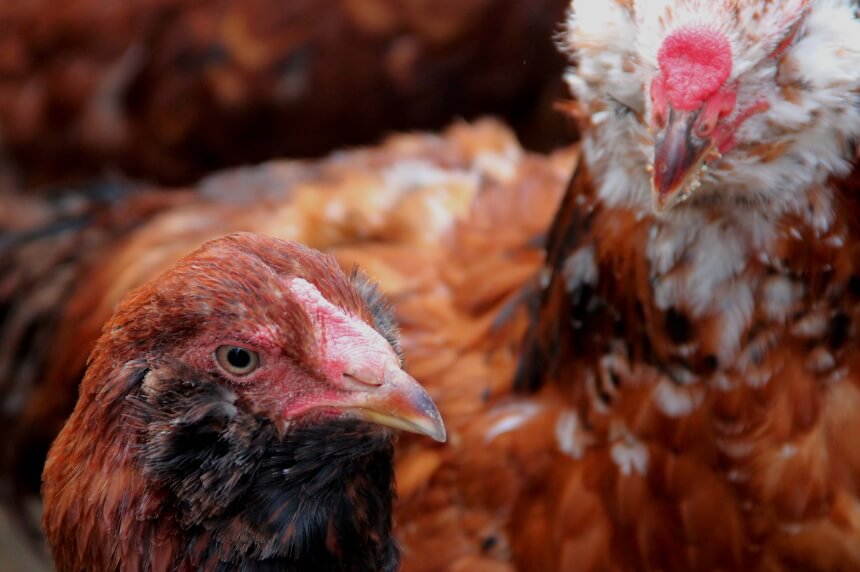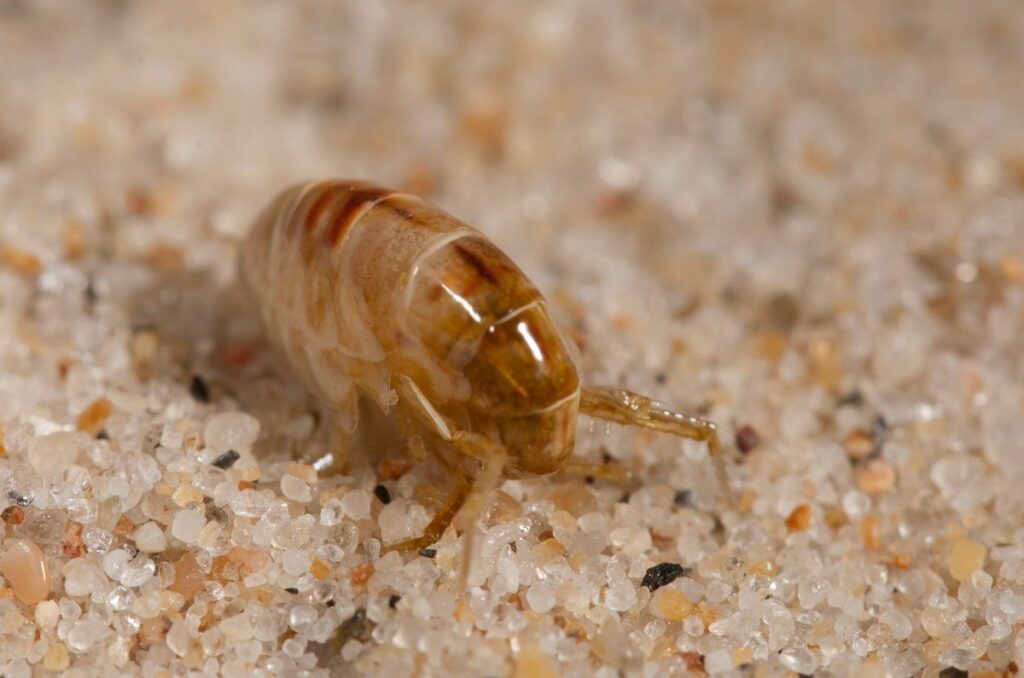

Fleas can be a terrible problem and it’s often very hard to get rid of them once they start. During certain months, fleas tend to come around and it’s up to you to protect your household. If you’re wondering how to get rid of fleas, you’ve come to the right place.
There are many valuable solutions and tools to help you know how to get rid of those pests in just about any situation. In this guide, we will walk you through how to know what fleas are, identifying whether you have a problem, identifying when a professional might be needed, and how you can try to get rid of fleas on your own as well.
Fleas are pretty tiny creatures. They’re sneaky and quick. Sometimes, they can be mistaken for bed bugs buts, but there are certain distinctions between the two.
While fleas and bedbugs have similar colors, they are different shapes. Bed bugs are flat and shaped in ovals, whereas fleas are long and narrow in comparison.
Fleas can be identified by their colors, which are brown and red tones. They might even look black if you only get a quick look at them. Full-grown fleas only measure about 1/8 of an inch.
Fleas do jump and move and you’re likely going to know when they are around, despite the size that makes them harder to see. We will help you learn how to identify a flea problem a bit later in this guide.

Flea life cycle starts with the egg. The eggs are also very small but will be white and possibly smooth as well. Most fleas only live for about 100 days, but it’s actually possible for them to live a full year, depending on the situation.
In those short-planned 100 days of life, fleas can lay 2,000 eggs. That’s a lot of eggs and a lot of little fleas to grow up as well. After the eggs hatch, fleas move into the larva stage, the pupa stage, and then adults. From hatching to adults, it only takes a few weeks for the full cycle to happen.
There are several ways to identify a flea problem. You might see signs around the home that allude to fleas being present. However, you should also know how to identify a flea problem with your pets. Being able to tell whether those bites on your ankle are from fleas or some other bite is important.
Take a look at these details to better understand how to identify flea bites and problems in general.

Typically, flea bites will appear as small red bumps. They show up in clusters or even in a straight line but there are usually three or four small bites together (and sometimes more).

These fleas are known for being able to move through the hair of their host because of their tiny sizes. They also lay eggs in that hair, leading to the production of more fleas.

Much like the bites of other fleas, these will show up in a cluster and will be small bites. The fleas are reddish brown in color. The bites will be raised spots but will be smaller and clustered still. They are most likely to show up near underarms or on your head.

While these fleas stem from rats, they can easily find their ways into homes or other buildings, particularly if you live near a river or know of rat infestations nearby. These fleas jump really high, can carry diseases, and love heat.

Learning how to get rid of fleas incorporates a lot of different information. For example, if you want to know how to get rid of fleas natural, you can use vinegar, dawn and other home remedies to do so. Take a look at some of these examples. You can also use pre-made materials if you prefer those to DIY solutions.
Take a look.

Getting rid of fleas naturally with vinegar in your home is incredibly easy. You just use a vinegar and water solution and spray it all throughout the home, including into your carpets and furniture. The vinegar will kill fleas and their eggs.
Another method for how to get rid of fleas with home remedies is to use baking soda or salt. Salt can be effective at killing fleas and their eggs but it can also be challenging to clean up after the fact. You may have to vacuum several times to get rid of it. However, this method works by sprinkling salt all over the carpet and furniture surfaces and letting it sit for a minimum of 30 minutes. Then, vacuum several times. The salt dehydrates and kills fleas and eggs.
Once you’ve worked on fleas in the home, start on how to get rid of fleas in bed. This may take some additional effort. First, you will definitely need to wash all bedding. This includes the sheets, pillows, blankets, and whatever else you have on the bed. Use hot water for washing purposes. Then, clean your mattress too. Try using vinegar, or another DIY solution and coating the bed. Let it rest and then vacuum the mattress a few times.
Here are a few other methods for how to get rid of fleas in your home as well.
The other option is to use a bomber or a fogger to get rid of fleas in your home. We’ve found some of the best flea bombs and foggers for houses that you can use if you identify a flea problem and want to get it taken care of quickly.

You may want to follow up this procedure with a good bath to help rinse off the soap but also to get rid of those fleas. While you’re bathing the pet, try using a flea comb to help. Reviewers highly recommend this flea comb from Hartz as an effective tool.
You can also bathe your pet with flea and tick shampoo. This can be helpful, but if your pet has sensitive skin, it might also further irritate their skin so use something gentle and soothing. Keep in mind that your pet might have sores or raw areas from scratching and certain chemicals might be painful to them.
There are drops, tablets, and even flea collars that you can use to help your pets. Use these under the advisement of your veterinarian to be sure it’s safe for your pet and the best choice for their needs. If you do notice irritation, be sure to try another solution.
Another gentle solution that is recommended by many pet owners is this Vet’s Best flea and tick spray. It’s made with natural oils so it’s not loaded with chemicals.

We’ve found these best flea killers for yard to help you sort through some reliable solutions.
If you’ve tried some of these home solutions and don’t seem to be getting anywhere, this is a sign to call in the professionals. They will have specialized foggers or sprays that they can use to treat all areas of your home. Sometimes, they will need to apply more than one treatment to fully get rid of the fleas.
Taking steps to avoid flea infestation will be critical. You have some options for the best way to do this.
This simple steps could go a long way to keeping fleas out or reducing infestations.
How long does it take to get rid of fleas on a dog?
You need to plan to routinely treat your dog. Once there is an infestation, it can take 3-4 months to fully eradicate fleas because of the life cycles.
How to get rid of fleas in the car?
You can use many of the same methods for your car as you would for your home. This includes flea bombs and foggers, spray treatments, vinegar, baking soda, salt, and vacuuming.
Nobody wants fleas to come into their homes or to bombard their pets and cars but it does happen. Fleas can be challenging to fight, primarily because they lay a lot of eggs so killing all fleas and their eggs simultaneously is nearly impossible. Even professionals typically have to treat more than once to do so.
However, when we look at how to get rid of fleas, there are many valid solutions. You can use things like sprays, bombs, and foggers for your home. You can also treat your pets and your home with natural solutions that will be gentler and won’t have as many harsh chemicals to worry about.
Remember the process takes time and you may have to repeat steps to fully get rid of fleas.





